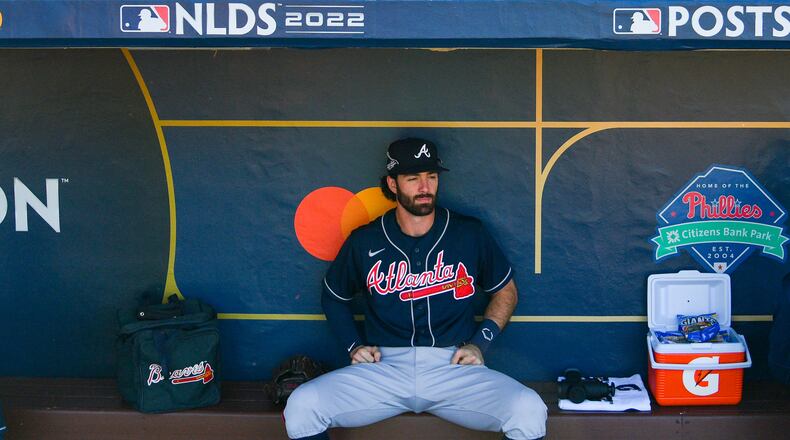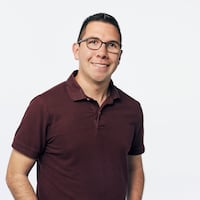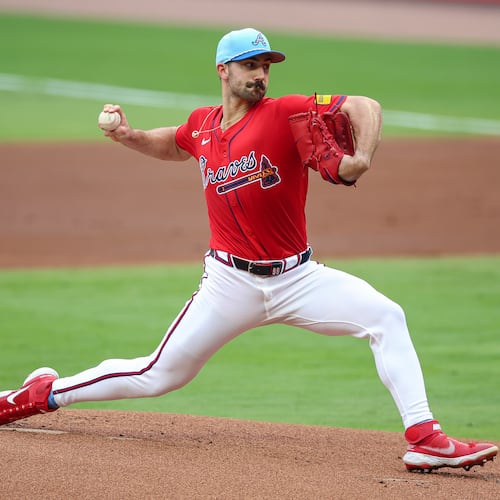A couple of months ago, Braves Chairman Terry McGuirk told The Atlanta Journal-Constitution that his goal was for the organization to eventually have a top-five payroll – but did not specify when. Recently, Liberty Media President and CEO Greg Maffei echoed this sentiment.
Ahead of next week’s Winter Meetings in San Diego, Braves fans have one main question about all of this: Are the Braves expected to spend big this winter?
At the General Managers Meetings in Las Vegas, one reporter asked Braves president of baseball operations Alex Anthopoulos whether he would keep an open mind about signing a top-end starting pitcher. Anthopoulos began his answer with a quote that might apply to anything the Braves do.
“You don’t rule anything out,” Anthopoulos said before continuing with the rest of his response.
Anything can occur. The offseason can go in different ways.
Now seems as good a time as any to look at the Braves’ payroll, which has steadily risen over the past few years.
FanGraphs currently estimates the Braves’ 2023 cash payroll to be $196 million. But the outlet estimates the Braves’ luxury tax payroll to be around $228 million, which is close to the $233 million luxury tax threshold for the 2023 season.
Internally, the Braves have talked about how they would surpass the luxury tax threshold, and accept the penalties, for the correct player and deal. They don’t see the threshold as a hard-and-fast limit. No one likes getting taxed, but the penalty for first-time offenders – a 20% tax for the overages – isn’t seen as debilitating.
The obvious question about the luxury tax situation: Which deal will classify as one that makes the Braves comfortable crossing the threshold?
When handing out contract extensions, the Braves set up those deals in a calculated way. The most they will pay for any player on this roster in a given season is $22 million. If Dansby Swanson were to sign for an average annual value around there, the Braves would surpass the luxury tax threshold. Their payroll continues to rise and, in time, we’ll see which deals push them across that line.
But this is worth noting: The Braves are more concerned with their cash payroll (the one estimated to be around $196 million as of this writing) because that’s what they’ll actually pay this year. So we’ll focus on that.
Their luxury tax figure is higher because it takes into account the average annual value of guaranteed contracts and not what a player will earn in a specific season. The Braves have given out multiple long-term extensions, which has driven up their luxury tax number. (For example, Austin Riley, Michael Harris and Spencer Strider will make more money in four years than they do now, based on their contract breakdowns).
FanGraphs’ current estimate of $196 million for the Braves’ cash payroll includes projections for arbitration-eligible players who have not yet agreed to terms (such as Max Fried). But the figure will rise if the Braves sign Swanson or anyone else.
Before making any big move, the Braves could shed some payroll if they choose to do so. Perhaps they trade catcher Manny Piña (owed $4.5 million in 2023), though Anthopoulos said publicly that he likes what Piña brings to the club. Or maybe they find a way to unload Marcell Ozuna and the $37 million he’s still owed on his contract, though the Braves wouldn’t be surprised if Ozuna has a bounce-back season in 2023. Anthopoulos surely has thought about the different avenues he could go with all of this.
His job is to balance focusing on the present with thinking about the future. The Braves cannot pay everyone, which means they eventually might need to break in a couple of young players (who will cost less) instead of re-signing or signing a free agent (who will cost more). That’s not to say the Braves won’t bring back Swanson – both sides are interested in continuing the partnership – but no club can afford everyone in the long run.
Just a couple of years ago, the Twins offered Josh Donaldson more money than the Braves felt comfortable paying him. The Braves really wanted Donaldson back, but this opened the door for Riley, who now is an All-Star third baseman with a large contract extension. In recent years, the Astros have lost George Springer, Carlos Correa and Gerrit Cole … and have kept chugging along.
There’s risk in giving opportunities to younger players versus paying for more established options. But the Braves have been aggressive in seeing what they have in younger guys, whether it be Cristian Pache (didn’t work out) or Harris (did work out).
When analyzing the Braves’ offseason, we must remember their vision for building this team. The Braves placed an emphasis on drafting and developing players. Their payroll increased, but their focus remained the same. They built from within, not from the outside. They use free agency, but not like some of their rivals.
In recent seasons, National League East-foes Philadelphia and New York have made splashes in free agency. The Braves, however, have won five consecutive division titles. Some clubs hope to win the winter, but the Braves aren’t one of them. They’re methodical and have used free agency to add a piece – not to build a team.
The Braves’ version of heavy spending in free agency has come in extending their own players. That’s where they’ve dedicated many of their resources, and they have locked up talented players for much less money than they would’ve spent had they signed the equivalents of those players in free agency.
The Braves have excelled at making good decisions on the margins. They haven’t gotten desperate, and they understand one bad deal could mitigate some of the advantages they’ve given themselves by building their team as they have over the past five-plus years.
Does this mean the Braves won’t sign Trea Turner, Carlos Correa, Xander Bogaerts, Jacob deGrom, Justin Verlander or any other big-time free agent? No, because you can’t rule out anything. No one knows how the winter will play out.
But it’s also worth wondering whether signing a big-time free agent would make the most sense for the Braves. After setting themselves up for future success with an unprecedented run of extensions, the Braves might be better off working around the margins than potentially sacrificing some of their flexibility with a hefty free-agent contract.
The Braves must figure out Swanson’s situation. Perhaps they’ll add an outfielder who can help with left field. Trades for a shortstop or a left fielder could make sense for the Braves, though it’s fair to wonder if they’d be comfortable dealing prospects after their farm system took a hit from graduations and the Matt Olson trade.
The Braves have four quality starting pitchers – at least two of whom have Cy Young Award talent – and a handful of pitchers who’ll compete for the fifth-starter job. They could pull the trigger if there’s a trade or signing that will bolster their rotation, but they like how the candidates for that final spot have options. They could continue adding to their bullpen.
The point with all this: The Braves probably can continue to compete for World Series titles without giving a high-end free agent a massive deal this winter. There are free agents who would strengthen their chances of doing so. But at what cost? This is what the team will evaluate as it goes forward.
The Braves have a talented and deep roster. They’ve locked up their core with savvy extensions.
In doing so, they’ve given themselves options as they try to continue winning, now and in the future.
About the Author
Keep Reading
The Latest
Featured



